
Contents










People · Written by Kim Samuel Photographed by Studio Kenn
Pioneering Asian Model
Making her debut 22 years ago, model Song Kyunga saw her star rise at a time when few Asians graced global runways.
Chosen at the time as one of the world’s top 10 rising stars by models.com, a leading U.S.-based model ranking site,
she appeared in dozens of fashion shows and magazine covers in her first season abroad.
Still a sought-after model today, she continues to maintain and reinvent her own brand.

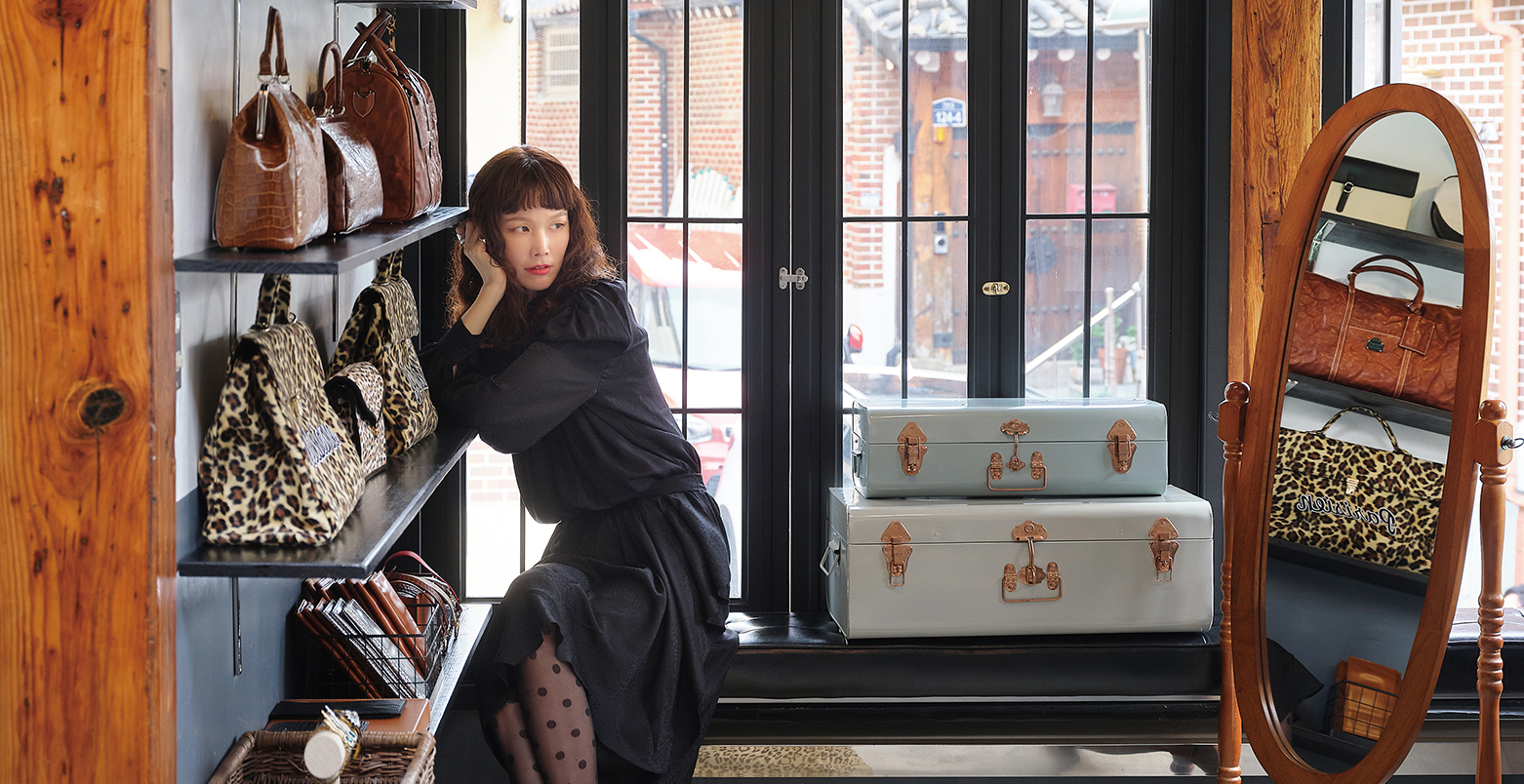
Considered tall since middle school, Song Kyunga has always walked around hunched over. She said she hated to hear from people, “You’re so tall.” To correct her posture, her mother sent her to a modeling academy where Song learned to walk properly. As it turned out, the academy was for training supermodels. Song’s older sister did her little sibling’s eyebrows, and the future model’s ID photo was put on her application for a supermodel contest, in which she made the finals. Making her modeling debut in 1997 while still in high school, Song looked great thanks to her height and slender body in outfits with androgynous appeal, a fashion theme at the time. Even while majoring in broadcasting and entertainment after entering university in 1999, she was far more a model than a student. University life seemed like another world to Song, who barely had time to attend classes after working full days at three to four studios.
“I debuted as a model early in life and had no ordinary days. Seeing friends become screenwriters and branch out into various fields, I suddenly felt like a big fish in a little pond,” she said. “At the time, models had short careers and I worried over whether I’d stuck with fashion too long. I believed that this wasn’t the end and that my next step would eventually come along. First, I began self-study in English and this was helpful when I went to New York. Nothing is meaningless in life.”
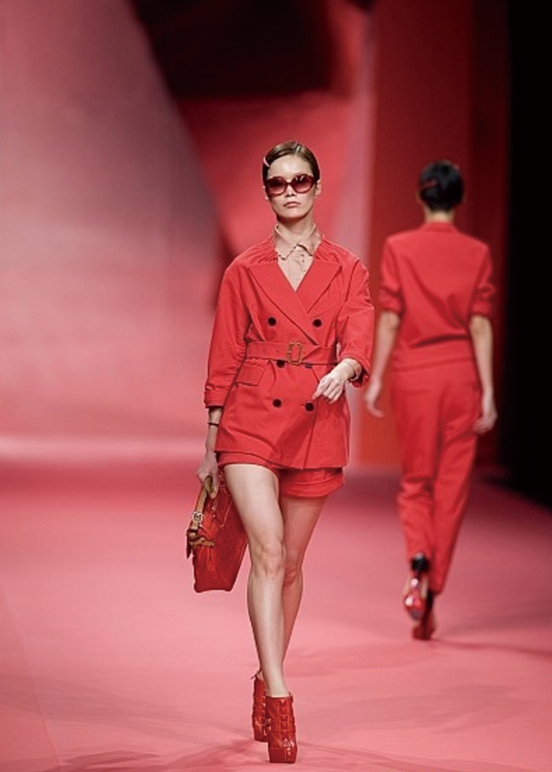
Song Kyunga walks on the runway. © Song Kyunga / ESteem Entertainment
Going for the Gusto
At a time when few Asian models plied their trade in New York, Song in 2004 set her sights on the international stage. She heard that the chief designer for Bill Blass, a couture brand based in the Big Apple, wanted Asians as next-generation models. To this day, people still talk about how the chief designer used four photographs of Song to gauge other Asian models.
On her first day in New York, she had interviews at 10 agencies, going to each alone and sometimes arriving late. Eventually, New York began to recognize her after she appeared in ads for the department store Bloomingdale’s. Her inclusion in the New York Collection marked the culmination of her tireless efforts to make it big in America. In her first season alone, she appeared in 36 shows.
“Of course, not everything went the way I wanted to in the beginning. I was able to break through only after gaining confidence,” she said. “The fashion show using an upside-down concept is still remembered to this day. This unique show had the finale proceed as the designer stepped forward first to say hello, followed by models walking in reverse order. I was supposed to walk first on stage but the director had concerns because the show’s order was complicated. I was asked about my English proficiency and replied evasively, ‘A little bit.’ How could I have known that I was replaced by another model in the opening order? I still regret that. I’ve since never shown humility unnecessarily.”
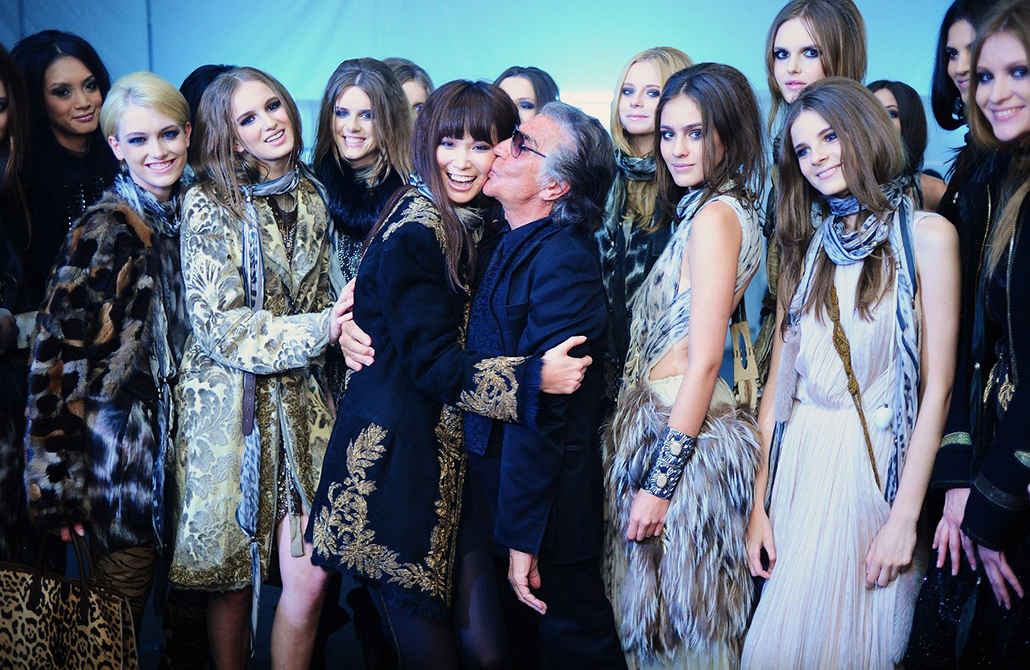 © Song Kyunga / ESteem Entertainment
© Song Kyunga / ESteem Entertainment The model has appeared on numerous magazine covers. © Song Kyunga / ESteem Entertainment
The model has appeared on numerous magazine covers. © Song Kyunga / ESteem EntertainmentAsian Modeling Pioneer
Song’s success in New York helped pave the way for other Korean models to advance abroad. Because of racism since Asian models were not part of the mainstream, Song had appearances canceled at the last minute due to the notion that styling her hair was more difficult than that of white models. She ignored this and knew that by undergoing such discrimination first, the Asian models after her would not.
After finishing the New York Collection, she toured Milan and Paris. She kept a diary despite her busy schedule, and events in her daily life were gathered and published in several books, from the people she met in New York to how she was inspired to create her own brand. Song also painted pictures and learned ceramic making, later hosting several exhibitions. After she appeared on a TV program, the furniture and props used to design her home evoked high interest. She said the unceasing force behind her thirst for new challenges stemmed from her “desire to express.”
“Modeling is a profession for expressing clothing. I launched the brand 1st Rumor because I wanted to express myself,” she said. “The newly launched bag was named ‘Hippie Bag.’ I created color blocks by weaving leather with different materials and spiced them up with the color yellow, which represents retro style. Needless to say, this season’s trend is retro. Clothing pulled from your parents’ closets is the best. I failed to realize this before but I recall how beautiful the embroidery my grandma did on silk pillows was when I was a child. The rotation of trends implies that beauty is nestled in everyday life. I want to keep expressing myself so that I don’t get too familiar and lose my touch.”
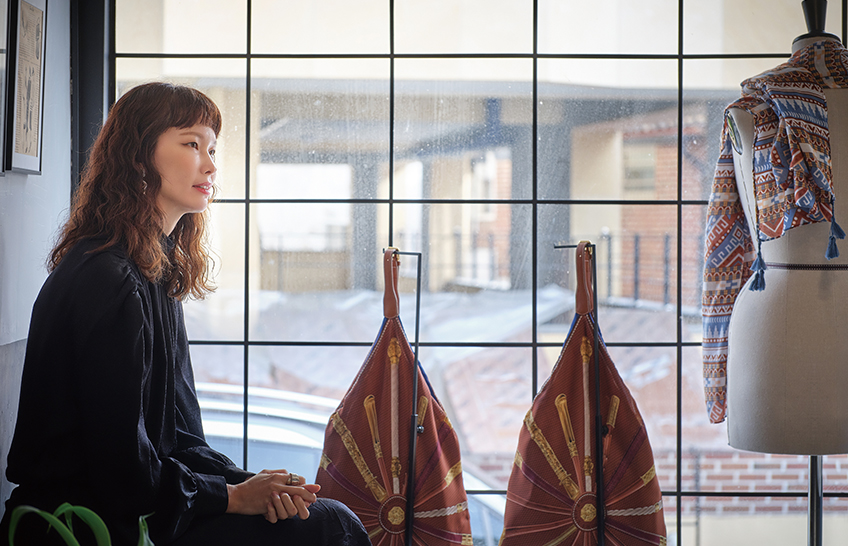
Song exudes energy and kindness in the interview.
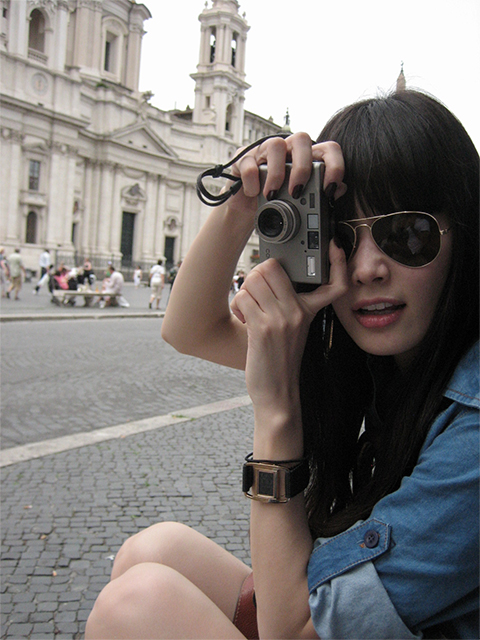
Profile
Song Kyunga
- Fashion show model for Christian Dior, Gucci, Giorgio Armani, Phillip Lim and Viktor & Rolf
- First Korean model with photo shoots published in magazines such as Vogue Italia, Cosmopolitan USA, Numero, Flaunt and London Times
- Participant in numerous global campaigns for brands like Diesel, Levi’s and MAC Cosmetics
- Founder of fashion brand 1st Rumor in 2014
- Winner of Model of the Year award from Zhejiang Satellite Television (China) in 2011
- Subject of book Fashion Model Song Kyunga Steals New York published in 2006
- Modeling debutant in 2004 for Bloomingdale’s (U.S.)
Other Articles















